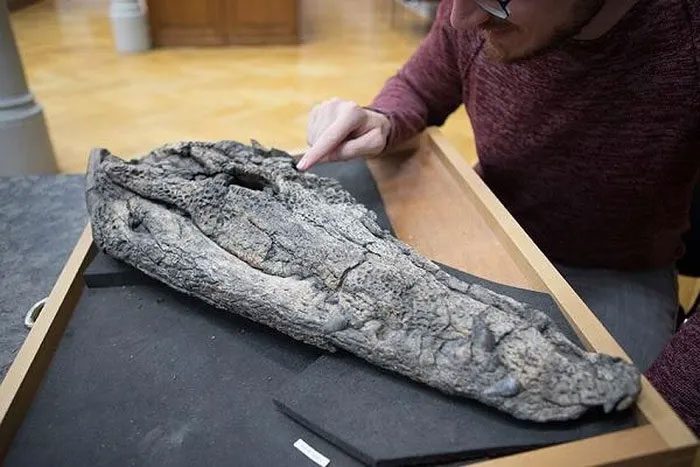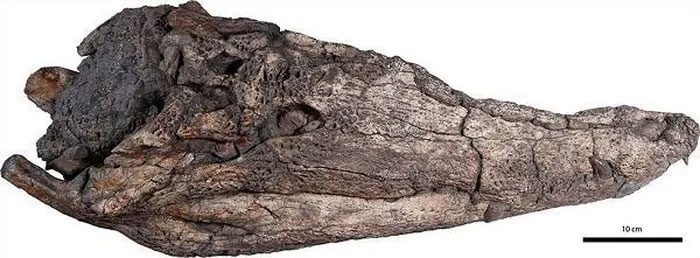At the Na Duong site, scientists have discovered fossils of a previously unknown species of crocodile, representing the oldest member of the Malay crocodile family in Asia.
The Na Duong Basin, located in Lạng Sơn Province near the Chinese border, is one of the few areas in East Asia and Southeast Asia that has a complete continental sedimentary sequence from the middle Eocene to the middle Oligocene. This basin is part of the Cao Bang – Tien Yen fault zone and covers an area of 45 km2. The Na Duong formation is 240 meters thick, with the upper 140 meters exposed at the Na Duong open-pit coal mine.

Fossils dating back 35 to 39 million years. (Illustrative image).
Here, the fossils of a previously unknown species of crocodile were discovered. The nearly intact skeleton measures almost 4 meters long and belongs to the long-snouted crocodile group, the gharials. These fossils are dated between 35 to 39 million years ago, providing new insights into the migration of crocodiles from their homeland in North Africa and Western Europe to Southeast Asia.
The gharial crocodiles have long snouts specialized for catching fish. Species in this family are currently on the brink of extinction: the Malayan crocodile (Tomistoma schlegelii) in the Malay Peninsula, Borneo, Sumatra, and Java; and the Indian crocodile (Gavialis gangeticus) in Nepal and India.
Although scientists worldwide have conducted numerous genetic studies, there is still no compelling evidence showing the exact relationship between these crocodile species.
The newly discovered crocodile species at the Na Duong site has been named Maomingosuchus acutirostris (“acutirostris” in Latin means “sharp-snouted species”).
Along with previously discovered crocodile species in southern China and Thailand, it represents the oldest members of the Malay crocodile family in Asia.

Orientalosuchus with a short snout and Maomingosuchus with a long snout both inhabited lakes in northern Vietnam. (Illustrative image).
“Data indicates that relatives of the Malay crocodile arrived in Southeast Asia three separate times. The first ‘expedition’ of the Maomingosuchus from North Africa and Western Europe to East Asia occurred during the Eocene, over 39 million years ago,” said Professor Tobias Massonne from the Senckenberg Center for Human Evolution and Palaeoenvironment at the University of Tübingen.
In 2019, the research team discovered another previously unknown species of crocodile (Orientalosuchus naduongenesis), measuring about two meters, also at this site.
Orientalosuchus with a short snout and Maomingosuchus with a long snout both lived in lakes in northern Vietnam. Their close relatives also existed around the same time in southern China and Thailand.
The three regions where Maomingosuchus and its relatives were found are very close to each other, and notably, they are distinct species with none appearing simultaneously in all three regions. This serves as evidence of the diversity of crocodiles in Asia during that period.





















































